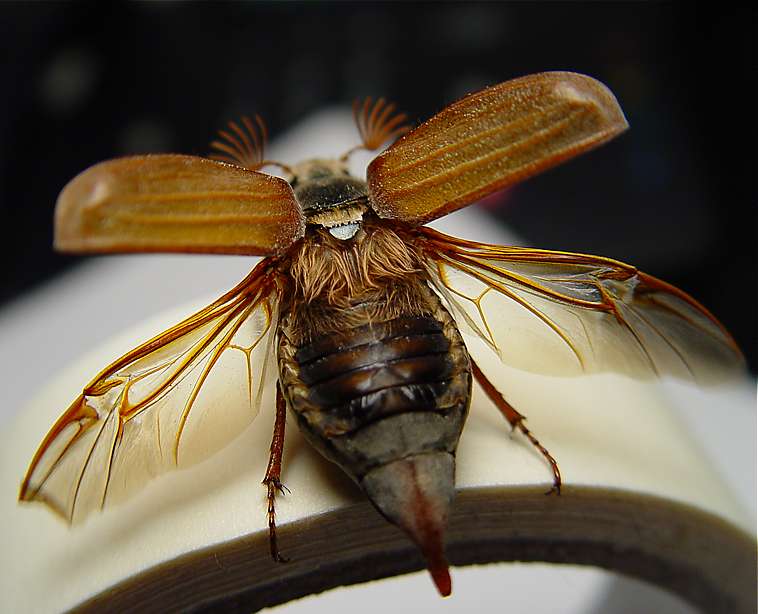|
Zaitzevia Tsushimana
''Zaitzevia tsushimana'' is a small, wingless beetle in the family Elmidae. The species is found in the Nagasaki Prefecture of Japan. Description The species's head is black and its elytra are also normally black but can also have a purple and brown hue. Its claws and mouth parts are brown, and the surface of its underside is dark brown. The species is most similar to ''Zaitzevia rivalis ''Zaitzevia'' is a genus of riffle beetles in the family Elmidae. There are about 19 described species in ''Zaitzevia''. The genus is named after the Russian entomologist Filipp Zaitsev ( ru). Taxonomy The genus ''Zaitzevia'' was originally d ...'', but can be told apart by its smaller body, triangular scutellum, and the sparse serration of its elytra. References {{Taxonbar, from=Q2496886 Elmidae ... [...More Info...] [...Related Items...] OR: [Wikipedia] [Google] [Baidu] |
Elmidae
Elmidae, commonly known as riffle beetles, is a family of beetles in the superfamily Byrrhoidea described by John Curtis in 1830. Both adults and larvae are usually aquatic, living under rocks in fast-flowing shallow areas of streams, such as riffles, feeding on algae and biofilms. There are more than 150 genera and 1,500 described species in Elmidae. The oldest record of the group is '' Cretohypsilara'' from the Cenomanian aged Burmese amber Burmese amber, also known as Burmite or Kachin amber, is amber from the Hukawng Valley in northern Myanmar. The amber is dated to around 100 million years ago, during the latest Albian to earliest Cenomanian ages of the mid-Cretaceous period. .... See also * List of Elmidae genera References Further reading * * * * * External links * Polyphaga families {{Elmidae-stub ... [...More Info...] [...Related Items...] OR: [Wikipedia] [Google] [Baidu] |
Nagasaki Prefecture
is a prefecture of Japan located on the island of Kyūshū. Nagasaki Prefecture has a population of 1,314,078 (1 June 2020) and has a geographic area of 4,130 km2 (1,594 sq mi). Nagasaki Prefecture borders Saga Prefecture to the northeast. Nagasaki is the capital and largest city of Nagasaki Prefecture, with other major cities including Sasebo, Isahaya, and Ōmura. Nagasaki Prefecture is located in western Kyūshū with a territory consisting of many mainland peninsulas centered around Ōmura Bay, as well as islands and archipelagos including Tsushima and Iki in the Korea Strait and the Gotō Islands in the East China Sea. Nagasaki Prefecture is known for its century-long trading history with the Europeans and as the sole place of direct trade and exchange between Japan and the outside world during the ''Sakoku'' period. Nagasaki Prefecture is home to several of the Hidden Christian Sites in the Nagasaki Region which have been declared a UNESCO World Heritage Site. ... [...More Info...] [...Related Items...] OR: [Wikipedia] [Google] [Baidu] |
Japan
Japan ( ja, 日本, or , and formally , ''Nihonkoku'') is an island country in East Asia. It is situated in the northwest Pacific Ocean, and is bordered on the west by the Sea of Japan, while extending from the Sea of Okhotsk in the north toward the East China Sea, Philippine Sea, and Taiwan in the south. Japan is a part of the Ring of Fire, and spans an archipelago of 6852 islands covering ; the five main islands are Hokkaido, Honshu (the "mainland"), Shikoku, Kyushu, and Okinawa. Tokyo is the nation's capital and largest city, followed by Yokohama, Osaka, Nagoya, Sapporo, Fukuoka, Kobe, and Kyoto. Japan is the eleventh most populous country in the world, as well as one of the most densely populated and urbanized. About three-fourths of the country's terrain is mountainous, concentrating its population of 123.2 million on narrow coastal plains. Japan is divided into 47 administrative prefectures and eight traditional regions. The Greater Tokyo Ar ... [...More Info...] [...Related Items...] OR: [Wikipedia] [Google] [Baidu] |
Elytron
An elytron (; ; , ) is a modified, hardened forewing of beetles (Coleoptera), though a few of the true bugs ( Hemiptera) such as the family Schizopteridae are extremely similar; in true bugs, the forewings are called hemelytra (sometimes alternatively spelled as "hemielytra"), and in most species only the basal half is thickened while the apex is membranous, but when they are entirely thickened the condition is referred to as "coleopteroid". An elytron is sometimes also referred to as a shard. Description The elytra primarily serve as protective wing-cases for the hindwings underneath, which are used for flying. To fly, a beetle typically opens the elytra and then extends the hindwings, flying while still holding the elytra open, though many beetles in the families Scarabaeidae and Buprestidae can fly with the elytra closed (e.g., most Cetoniinae; ). In a number of groups, the elytra are reduced to various degrees, (e.g., the beetle families Staphylinidae and Ripiphoridae), o ... [...More Info...] [...Related Items...] OR: [Wikipedia] [Google] [Baidu] |
Zaitzevia Rivalis
''Zaitzevia'' is a genus of riffle beetles in the family Elmidae. There are about 19 described species in ''Zaitzevia''. The genus is named after the Russian entomologist Filipp Zaitsev ( ru). Taxonomy The genus ''Zaitzevia'' was originally described in 1923 by George Charles Champion, a British entomologist. Champion placed two species within the genus: ''Z. solidicornis'', which he designated as the type species, and ''Z. acutangula''. While ''Z. solidicornis'' remains the type species of the genus, ''Z. acutangula'' was later transferred to the genus '' Indosolus''. In 2001, American entomologist Harley Brown proposed dividing the genus into two subgenera in order to better represent the diversity of the genus. Subgenus ''Zaitzevia'' is represented by ''Z. solidicornis'', while the new subgenus ''Suzevia'' is represented by ''Z. posthonia.'' Species The following 21 species are recognized as belonging to the genus ''Zaitzevia'': Currently accepted * '' Zaitzevia ari ... [...More Info...] [...Related Items...] OR: [Wikipedia] [Google] [Baidu] |
Scutellum (insect Anatomy)
The scutellum is the posterior portion of either the mesonotum or the metanotum of an insect thorax; however, it is used almost exclusively in the former context, as the metanotum is rather reduced in most insect groups. In the Hemiptera, and some Coleoptera, the scutellum is a small triangular plate behind the pronotum The prothorax is the foremost of the three segments in the thorax of an insect, and bears the first pair of legs. Its principal sclerites (exoskeletal plates) are the pronotum ( dorsal), the prosternum ( ventral), and the propleuron ( lateral) o ... and between the forewing bases. In Diptera and Hymenoptera the scutellum is nearly always distinct, but much smaller than (and immediately posterior to) the mesoscutum. File:Heteroptera morphology-d.svg, 26 = Heteroptera scutellum File:Housefly anatomy-key.svg, 6 = Diptera scutellum File:Coléoptère schématique.jpg, 9 = Coleoptera scutellum File:Scheme ant worker anatomy-numbered.svg, 10 = Formicidae scutellu ... [...More Info...] [...Related Items...] OR: [Wikipedia] [Google] [Baidu] |


